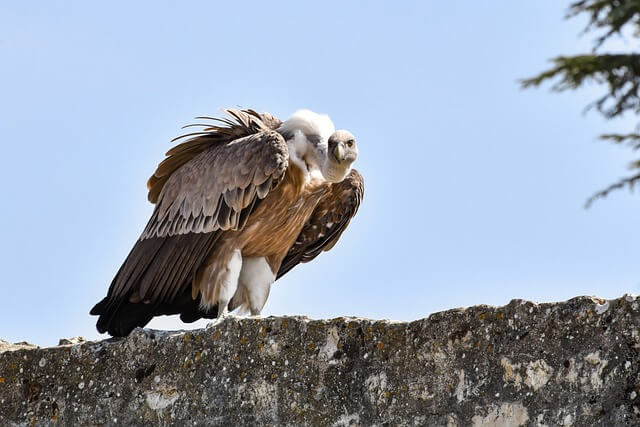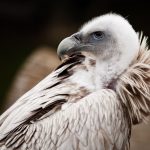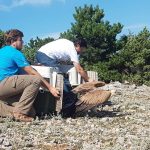But like much of the world’s biodiversity, griffons have been placed under increasing pressure to coexist with their human neighbors over the past several decades. Since the early 90s, locals on the island of Cres have been banding together to protect their feathered friends. Introducing Beli Visitor and Rescue Centre for Griffon vultures, a tourism must for anyone looking to taste the breath of Croatia’s wild beauty.
Above the sparkling waves of the Eastern Adriatic, one of Croatia’s most precious natural treasures can be witnessed gliding on thermal winds. As if untamed by the forces of gravity that tether the rest of us to the earth, Griffon vultures (Gyps fulvus) move effortlessly over skies across the Mediterranean, Middle East, and Central Asia. However, those found on Cres, Krk, Prvić, and Plavnik are unique. Croatia’s special brand of vulture earns its fame from their unusual homemaking behaviour, nesting on the jagged cliffs of the Kvarner islands, a unique sight to this region.
Griffons are spunky creatures, rocking a quilt of brown feathers below and an iconic bald head on top, a feature which I can’t describe as anything other than Muppet-like. While these qualities give the birds their unique look, the purpose of this smooth scalp extends far beyond a possible career on children’s television. As you may already be familiar with, vultures sport this cranial oddity for sanitary reasons, preventing the gore from their favourite foods from getting tangled in their plumage. I guess this is perhaps an unsavoury reminder of the dietary requirements of this nonetheless charming species.
While the vulture nutritional regimen may seem off-putting or even grotesque to some, these avian recyclers play a critical role in world ecosystems. If left unchecked, the rotting carcasses of dead animals provide an ideal environment for bacterial pathogens that could otherwise rot and cause disease. So, we should be grateful to these big-beaked meat eaters, not only for the vital work that they do on the ground but also for the beautiful spectacle they provide.
Fortunately, the people at Beli Visitor Centre happily overlook these natural quirks, committing their time and resources to protect and conserving this species so vultures can continue to call Croatia home for years to come. The center continues a project started by ornithologist Dr. Goran Sušić who led the former Eco-Centre Caput Insulae-Beli from 1993 to 2012. However, in 2014, the project was taken over by Priroda Public Institution.
Located in a building that once housed the local school, Beli Visitor and Rescue Centre is a must for families and youngsters who wish to visit the island of Cres (Something to consider adding to your summer schedule!). The recently refurbished building contains a multimedia exhibition on the griffin vultures and life on the island, also providing workshops where children can learn more about these intriguing arial inhabitants.
The need for a rescue center has proven itself to be great. On average, 10 birds are brought in every year, primarily juvenile birds that fell into the sea during their first flights, but adults sometimes need some help too. While this number may seem small, every bird counts, as griffons only reach sexual maturity at age five, and breeding pairs lay just one egg per year. Moreover, young birds have a high mortality rate of 75%, further exacerbating the need for conservation. If you happen to find an injured vulture while in Croatia, call 112, where your information will be forwarded to the center.
If this sounds interesting to you, get involved! In 2018, Priroda Public Intuitions began a volunteer program. Volunteers are accommodated at the center, supporting the work that Beli has become so famous for.
All the information in this article and more can be found here on the Beli Visitor and Rescue Centre’s website.
For more, check out our lifestyle section.











